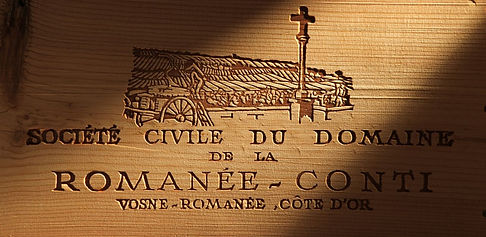

S
A B C D E F G H I J K L M N O P Q R S T U V W X Y Z
SASS-SAVO
SAAL-SAIN SAIN-SAIN SAIN-SASS SASS-SAVO SAXU-SCRE SCRE-SICI SIGN-SONO SONO-STAG STAG-SUPE
Only 4,5 and 5,0 NJP wines (Nenad Jelisic Points) are presented as the best vintages.
If for some wine behind “the best vintages” stands “none”, it means that none of the wine's vintages got 4,5 NJP or 5,0 NJP.
Sassicaia (red dry blend wine; 85% Cabernet Sauvignon och 15% Cabernet Franc), Bolgheri Sassicaia, Bolgheri, Tuscany, Italy, the best vintages, 1968, 1985, 2006, 2008, 2009, 2013 and 2015. (2018-11)
Sassicaia grapes, Cabernet Sauvignon and Cabernet Franc. (2014-06)
Sassicaia soils, gravely clay. (2014-06)
Saumur, a French appellation that belongs to the Anjou-Saumur wine district, which in turn belongs to the Loire wine region. The appellation has 4,000 ha and it consists of the following eight appellations: Cabernet de Saumur (rosé wines), Coteaux de Saumur (sweet white wines), Saumur, Saumur Blanc (white wines), Saumur Champigny (red wines), Saumur Mousseaux (sparkling wines), Saumur Puy Notre Dame (red wines) and Saumur Rouge (red wines). (2011-09)
Saumur grapes, Chenin Blanc, Sauvignon Blanc, Chardonnay, Cabernet Sauvignon, Cabernet Franc, Malbec and Gamay. (2011-09)
Saumur soils, chalky tuff. (2011-09)
Saumur-Champigny, a French appellation that belongs to the Saumur appellation, which in turn belongs to the Anjou-Saumur wine district, which in turn belongs to the Loire wine region. The appellation has 1,550 ha. The average yield is 55 hl/ha. The best Saumur-Champigny wines are usually aged in 400 to 600 litres oak barrels for up to 18 months before being marketed, and they belong to those who can be aged longest in the Loire wine region (15 to 20 years). (2011-09)
Saumur-Champigny grapes, dominate Cabernet Franc. (2011-09)
Saumur-Champigny soils, calcareous tuff mixed with sand. (2011-09)
Saumur Puy Notre Dame, a French appellation that belongs to the Saumur appellation, which in turn belongs to the Anjou-Saumur wine district, which in turn belongs to the Loire wine region. The permitted yield is max. 50 hl/ha. (2011-09)
Saumur Puy Notre Dame grapes, dominate Cabernet Franc (85%) and Cabernet Sauvignon (15%). (2011-09)
Saumur-Rouge, a French appellation that belongs to the Saumur appellation, which in turn belongs to the Anjou-Saumur wine district, which in turn belongs to the Loire wine region. The permitted yield is max. 50 hl/ha. (2011-09)
Saumur-Rouge grapes, dominate Cabernet Franc (usually 100%). (2011-09)
Sauternes, a French appellation that belongs to the wine district of Graves, which in turn belongs to the wine region of Bordeaux. Sauternes is known for its sweet wines. Botrytis cinereas' (noble rot) attack on the grape skin is crucial in the production of these wines. Without fog and high humidity would not be noble rot and Sauternes unique sweet wines, and in autumn, when the climate is hot and dry and the temperature difference between the air and the Garonne river and its Ciron tributary is greatest is when the noble rot develops. The more, the grapes affected by noble rot, the more they are sensitive to rain and, therefore, a heavy rain can destroy the entire vintage. Previously, these sweet wines had a sugar content of 90 grams per litre, and today, their sugar content is between 120 and 130 grams per litre. The appellation has 2,002 ha. The allowed yield is incredible low, 25 hl/ha, while the average yield is even lower, 22 hl/ha. Sauternes consists of five municipalities: Barsac, Bommes, Fargues, Preignac and Sauternes. (2016-02)
Sauternes grapes, Sémillon accounts for 60-90%, Sauvignon Blanc 10-30% and Muscadelle up to 10% of the grapes grown in the appellation. (2016-02)
Sauternes soils, gravel on limestone. In some parts of Sauternes, the limestone is covered by sand and clay. (2016-02)
Sauternes the best chateaux, Château Climens, Château Coutet (Cuvée Madame), Château Doisy-Daëne (L'Extravagant), Château Rieussec, Château Suduiraut and Château d'Yquem. (2016-02)
Sauternes the best vintages, 1945, 1949, 1959, 1962, 1967, 1983, 1986, 1988, 1989, 1990, 1995, 1996, 1997, 1999, 2001, 2003, 2005, 2009, 2010, 2011, 2014 and 2015. (2018-11)
Sauvignon Blanc aroma and flavour, dry, very fresh, aromatic with nettle, citrus, gooseberry, lime, asparagus, elderberry, green pears, grass, herbs, mineral and blackcurrant leaves. (2012-03)
Savigny-lés-Beaune, a French appellation that belongs to the Côte de Beaune wine district, which in turn belongs to the Burgundy wine region. Appellation consists of 11 Premier Cru-vineyards. No Grand Cru-vineyards.
Savigny-lés-Beaune grapes, Pinot Noir for red wines and Chardonnay for white wines.
Savigny-lés-Beaune soils, vary. Sand, ferrous clay and sandstone.
Savoie, a French wine region that consists of 5 appellations: Crépy, Seyssel, Rousette de Savoie, Vin de Bugey and Vin de Savoie.


NJ Wines
 |  |  |  |  |  |
|---|